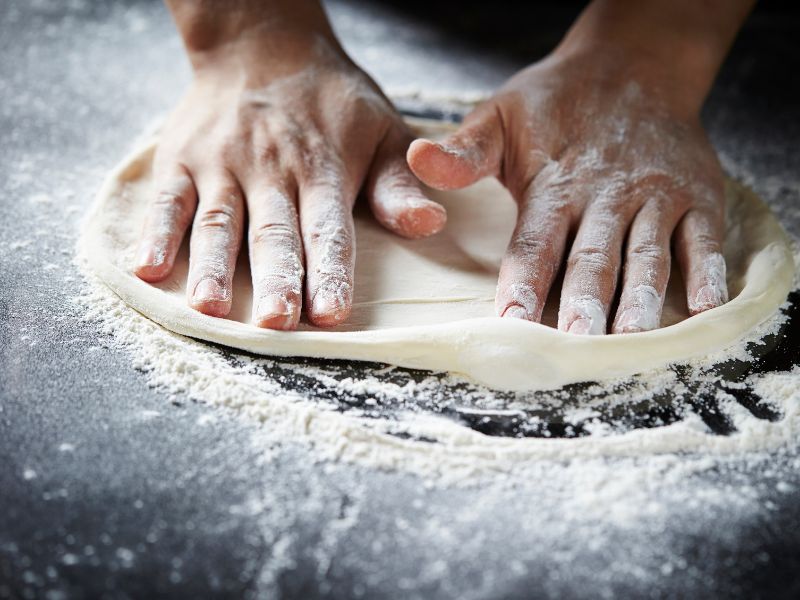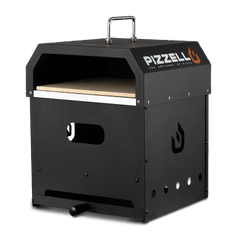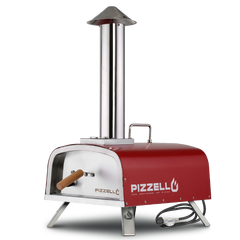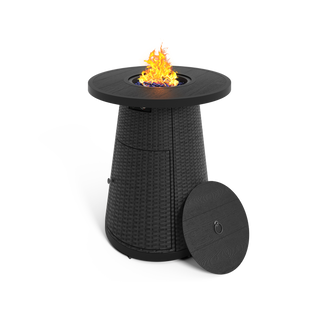Simple Homemade Pizza Dough Recipe: Your Easy Guide

Making pizza dough requires a few basic ingredients and some kitchen tools. Choosing the right type of flour and yeast is essential for the texture and rise of your dough.
Ingredients
- Flour: 2 to 2 1/3 cups (250-295g) all-purpose flour or bread flour
- Yeast: 1 packet of instant yeast (2 1/4 teaspoons)
- Sugar: 1 1/2 teaspoons
- Salt: 3/4 teaspoon
- Olive oil: 2 tablespoons
- Warm water: 3/4 cup (175ml)
Additional notes on the ingredients:
- Flour: The amount of flour may vary slightly depending on factors like humidity. Start with 2 cups and add more as needed to form a cohesive dough.
- Yeast: Instant yeast is recommended, but active dry yeast can also be used.
- Water: The water should be warm, around 100-110°F (38-43°C), to activate the yeast properly.
- Olive oil: In addition to the 2 tablespoons in the dough, extra olive oil is used for brushing the bowl and the pizza crust.
Optional ingredients that can enhance flavor:
- Garlic powder: 1/8 to 1/4 teaspoon
- Dried basil: 1/8 to 1/4 teaspoon
Equipment
- Digital scale
- Large mixing bowl
- Wooden spoon or spatula
- Measuring cups and spoons
- Dough scraper/bench scraper
- Pizza stone or baking steel
- Pizza peel
- Pizza cutter
Optional but helpful:
- Stand mixer with dough hook
- Proofing container
- Oven thermometer
What is the Best Pizza Dough Flour for Homemade Pizza Dough?
The following table provides a quick visual comparison of different flour types to help you choose your favored pizza flour, highlighting their protein content, resulting crust texture, best pizza styles, and additional notes.
|
Flour Type |
Protein Content |
Crust Texture |
Best For |
Notes |
|
All-Purpose |
9-11% |
Thin and crispy with a little chew |
Sicilian, deep-dish, New York-style |
Versatile, easy to find |
|
Bread Flour |
12-14% |
Chewier, more bread-like |
Traditional homemade, Chicago-style deep dish, Sicilian |
Creates stretchy dough |
|
Tipo 00 |
~12.5% |
Balanced crispy and chewy, thin center with puffy crust |
Neapolitan-style |
Ideal for authentic Italian pizzas |
|
Whole Grain |
~14% |
Nutty flavor, grainy texture |
Mixed with white flours |
Use 1/2 to 1 cup per 1 cup white flour |
|
Gluten-Free |
Varies |
Depends on blend |
Special dietary needs |
Almond flour for thin crusts, blends for chewy crusts |
Step-by-Step Instructions for Homemade Pizza Dough

- Mix ingredients: Combine flour, yeast, salt, and sugar in a large bowl. Add warm water and olive oil. Mix by hand or with a mixer until a shaggy dough forms.
- Knead: Turn dough onto a floured surface. Knead for 8-10 minutes by hand or 5-7 minutes with a stand mixer, until smooth and elastic.
- Let the dough rise: Place dough in an oiled bowl, cover, and let rise in a warm spot for about 1-2 hours or until doubled in size.
- Shape: Punch down the dough to release air bubbles. Divide into 2-3 portions. Shape each into a ball and let rest 10-15 minutes.
- Stretch: On a floured surface, use your hands to gently stretch each dough ball into a 12-inch circle. Let rest again briefly.
- Top and bake: Add your favorite toppings and bake in a very hot oven (400°F) for 15 minutes until crust is golden. Explore your beloved pizza oven at Pizzello for high quality and yummy pizza cuisine!
Get the kids involved! Little hands can help shape the dough balls and add toppings. Who can resist making funny faces with pepperoni? It's a fun family activity that results in delicious homemade pizza. 🍕
Tips of Perfectly Rising Time for the Dough
- Temperature is crucial: To achieve the perfect rise, the temperature of the water used to activate the yeast should generally be between 100°F to 110°F. If it's too hot or too cold, the yeast won't work as needed.
- Sugar helps the yeast: Adding a small amount of sugar provides the yeast with food to consume, which in turn helps the dough rise properly.
Freezing Homemade Pizza Dough: A How-To Guide
Freezing pizza dough is a fantastic make-ahead trick, allowing budding home chefs to enjoy homemade pizza anytime. By following a few simple steps, one can ensure their dough retains its quality in the freezer and is ready for a quick meal solution.
Prepping the Dough for Freezing
After the dough has completed its first rise, shape it into balls roughly the size you would use for a pizza. Wrap each ball tightly with plastic wrap to prevent freezer burn. It's essential to protect the dough from air, which can dry it out.
For added protection, place the wrapped dough balls in a freezer bag or airtight container. This step helps maintain both the nutrition facts of the dough and its flavor.
How Long does Pizza Dough Last in the Fridge?
Before one decides to freeze pizza dough, storing it in the fridge can be a temporary solution. Fresh pizza dough, when covered and placed in the cold room of the refrigerator, can typically last up to 2 days.
However, for those looking to go ahead and preserve their dough for longer, the freezer is a more suitable option, allowing the dough to last for up to three months. This is a convenient way to have dough on hand whenever the pizza craving strikes.
Thawing and Using Frozen Pizza Dough
When ready to use, transfer the frozen pizza dough from the freezer to the refrigerator the night before to thaw slowly. Allow the thawed dough to come to room temperature for about 30 minutes before using, which will make it easier to shape.
Once thawed, the dough should be soft and pliable, ready to be stretched into a pizza base for topping and baking into a delicious, home-cooked pizza.
Favorite Pizza Toppings: Elevate Your Homemade Pizzas

Experimentation leads to perfection when it comes to handcrafting pizzas at home. The choice of toppings can transform the taste and allure of your pizza, making each slice a unique experience.
Creative Pizza Topping Ideas
When one thinks of pizza toppings, classics like pepperoni, sautéed mushrooms, and mozzarella cheese immediately come to mind. However, one can step beyond the classics. Consider a mix of fontina, jack, and provolone for a cheese lover's dream.
For those seeking a garden-fresh option, fresh basil, spinach, and cherry tomatoes can create a pizza reminiscent of a summer salad. Adventurous home chefs might sprinkle cornmeal on the oven tray before baking to lend the homemade pizza crust a pleasantly crispy texture.
For meat lovers, a bbq chicken pizza offers a tantalizing twist with its sweet and tangy barbecue sauce. Meanwhile, vegetarians might savor a vegan pizza topped with a rich, homemade tomato sauce and a variety of grilled vegetables.
Don't shy away from a drizzle of truffle oil or a scattering of caramelized onions to add gourmet flair to your creation.
Combining Different Toppings for Unique Flavor Profiles
Creating harmony on a pizza goes beyond merely piling on the toppings. One must consider how different flavors and textures mingle and complement each other. Pair fresh mozzarella with thinly sliced prosciutto and a sprinkle of garlic powder for a perfect balance of saltiness and creaminess.
Complement the tang of goat cheese with the sweet acidity of balsamic-glazed strawberries for a pizza that serves as both an entree and a conversation starter.
Also, the sauce is the soul of the pizza, and a well-crafted homemade pizza sauce can elevate a simple pizza dough recipe to new heights. A thin-crust pizza with a delicate scattering of grated cheese, parmesan, and roasted garlic allows the vibrant flavors of the sauce to shine through.
Conversely, a thick-crust pizza or calzones may benefit from heartier toppings such as chunks of sausage, diced cheddar, or a layer of pepperoni.
Always consider the end goal: a balanced pizza that satisfies all senses, from a soft crust that yields to the bite to the rich, satisfying blend of toppings that fuse in every slice.
Other Uses for Homemade Pizza Dough
Here are some other creative ways you can choose to use homemade pizza dough beyond making the pizza:
- Breadsticks: Cut the dough into strips, season, and bake for an easy appetizer or side dish.
- Calzones: Fill the dough with cheese, meats, and vegetables, then fold and bake for a handheld meal.
- Cinnamon Rolls: Roll out the dough, spread with cinnamon-sugar mixture, roll up, slice, and bake for a sweet breakfast treat.
- Garlic Knots: Tie strips of dough into knots, brush with garlic butter, and bake for a tasty snack.
- Flatbreads: Roll the dough thin and top with various ingredients for a quick appetizer or light meal.
- Pot Pie Topping: Use the dough as a crust for savory pot pies.
- Stromboli: Layer fillings on the dough, roll it up, and bake for an Italian-inspired dish.
- Crackers: Roll the dough very thin, cut into shapes, and bake until crispy for homemade crackers.
- Fruit Tarts: Use the dough as a base for sweet fruit tarts or dessert pizzas.
- Pigs in a Blanket: Wrap hot dogs or sausages in strips of dough and bake.
- Quiche Crust: Press the dough into a pie dish for a quick and easy quiche crust.
- Monkey Bread: Cut the dough into small pieces, coat it with cinnamon-sugar, and bake in a bundt pan.
These ideas allow you to repurpose pizza dough for a variety of sweet and savory dishes, making it a versatile ingredient to keep on hand in your kitchen. Come and draft your own dough!













 Aluminum Dining Table
Aluminum Dining Table
 WPC Dining Table
WPC Dining Table
 HDPE Dining Table
HDPE Dining Table
 Cart
Cart
 Gas Burner
Gas Burner
 Hat
Hat
 Apron
Apron
 Swivel Rocker Set
Swivel Rocker Set
 Textilene Chairs
Textilene Chairs
 HDPE Chairs
HDPE Chairs
 Wicker Counter Height Barstools
Wicker Counter Height Barstools
 Metal Counter Height Barstools
Metal Counter Height Barstools


























